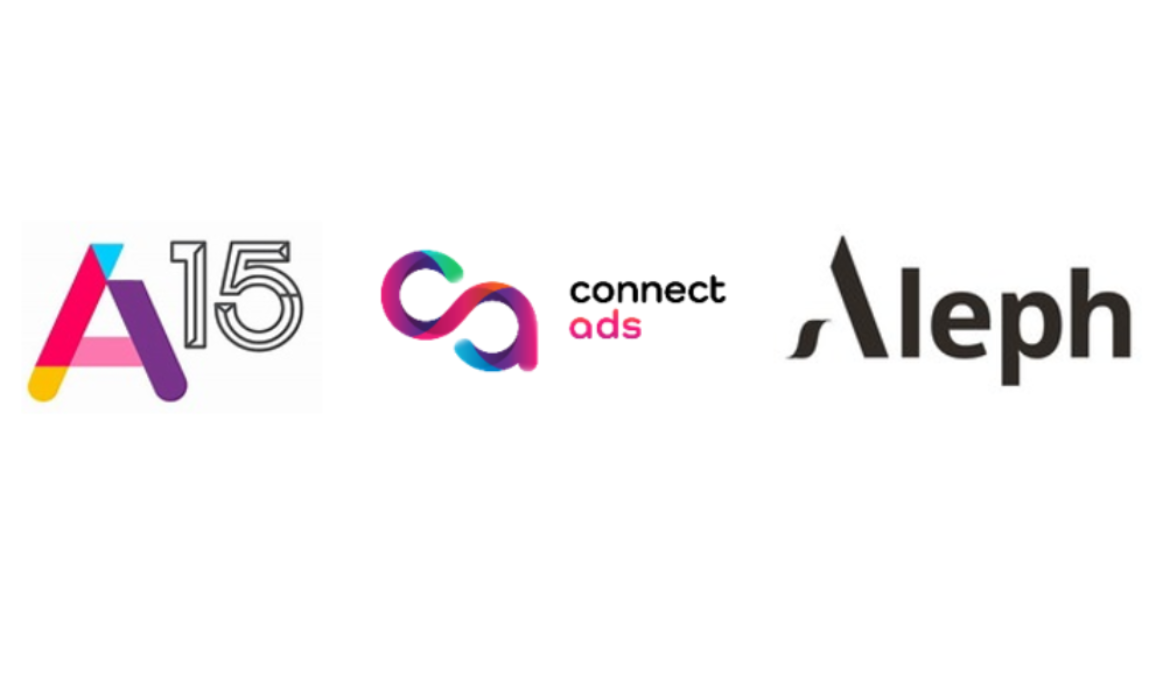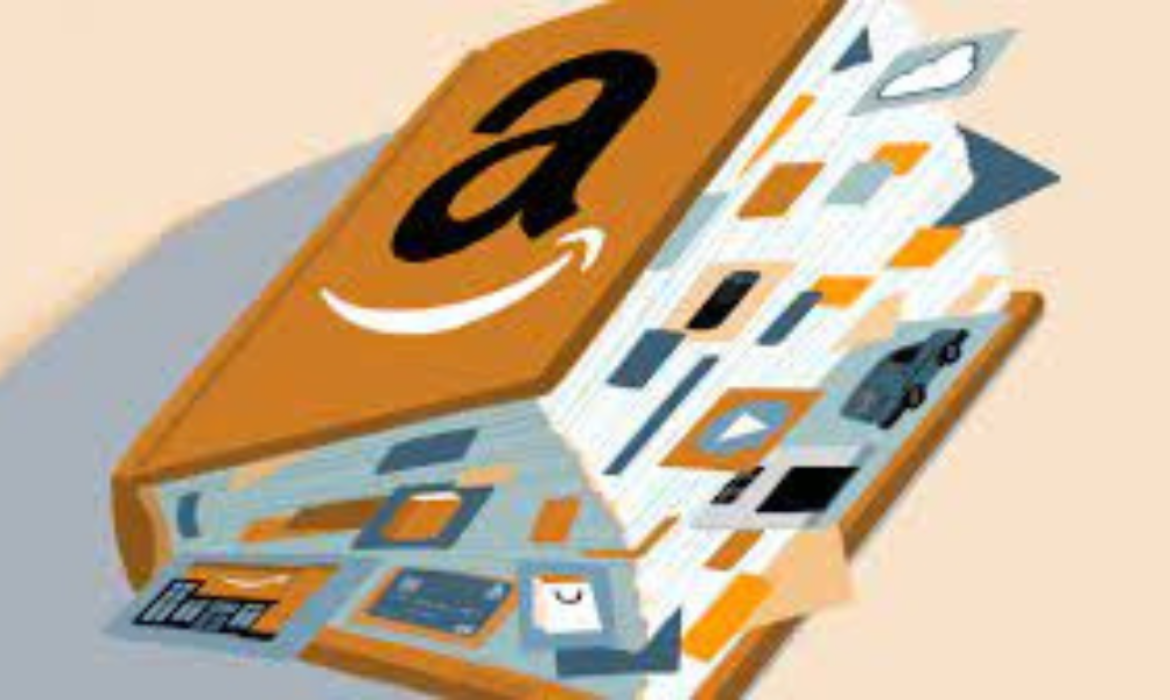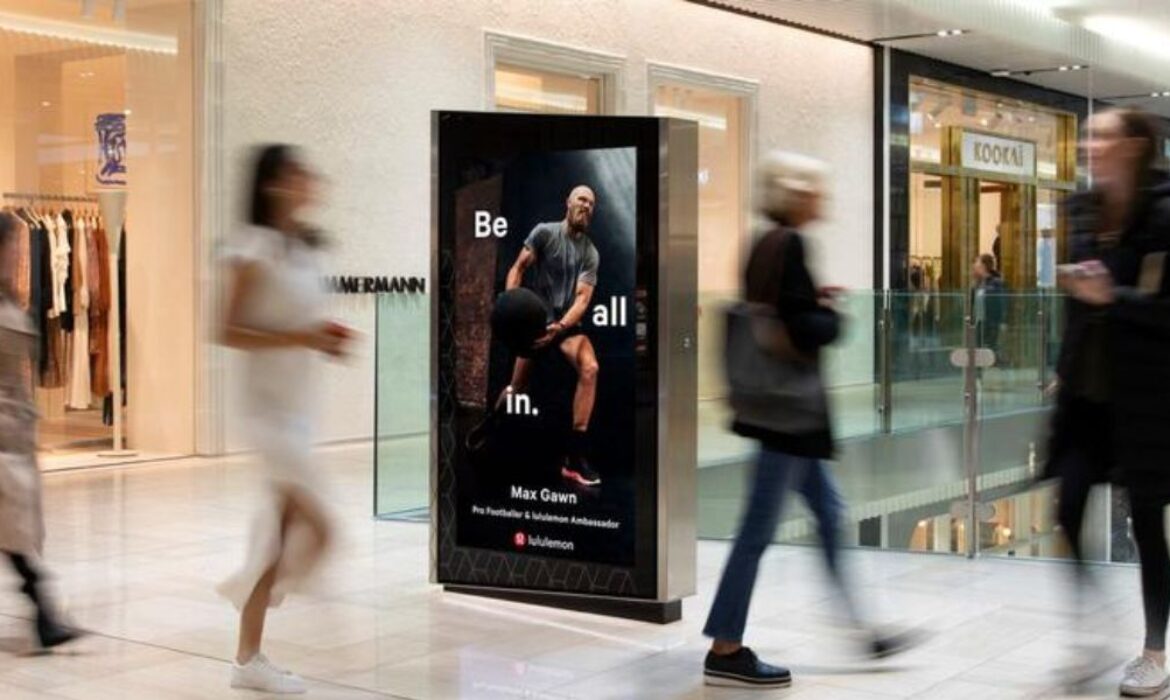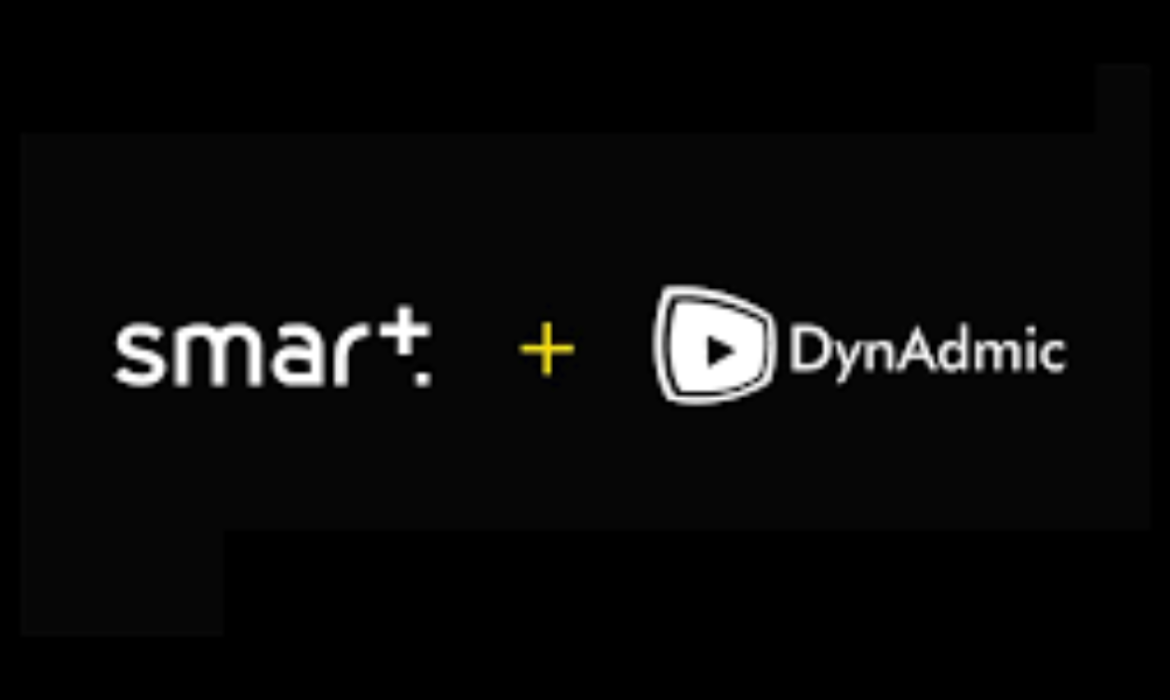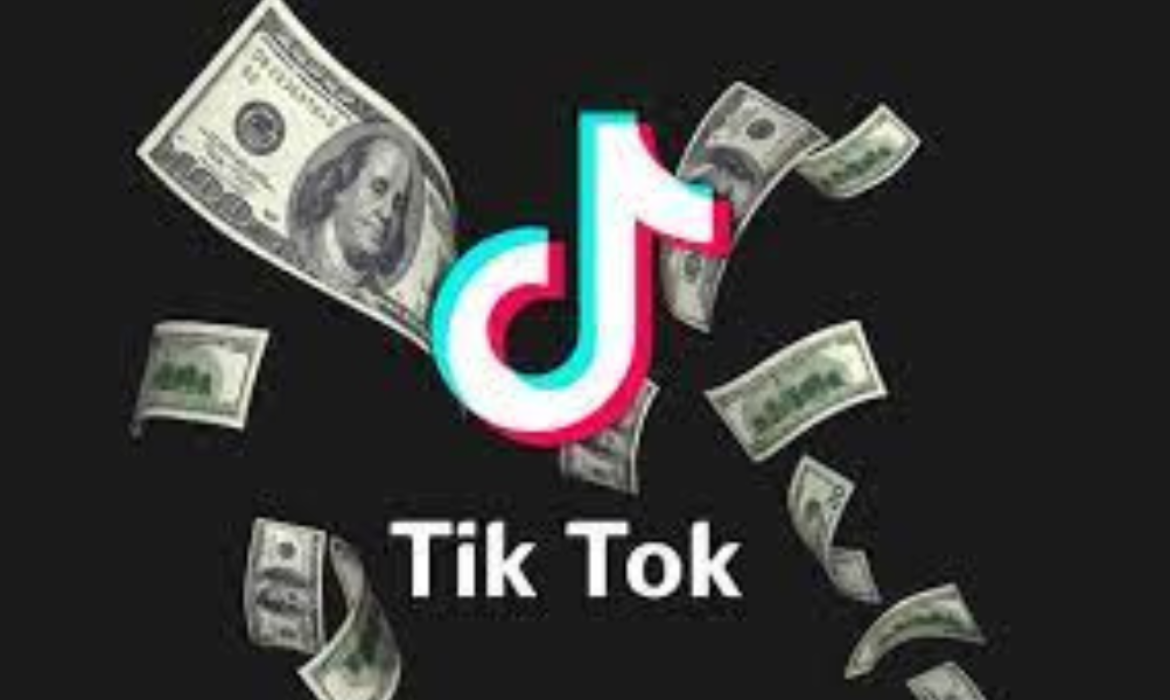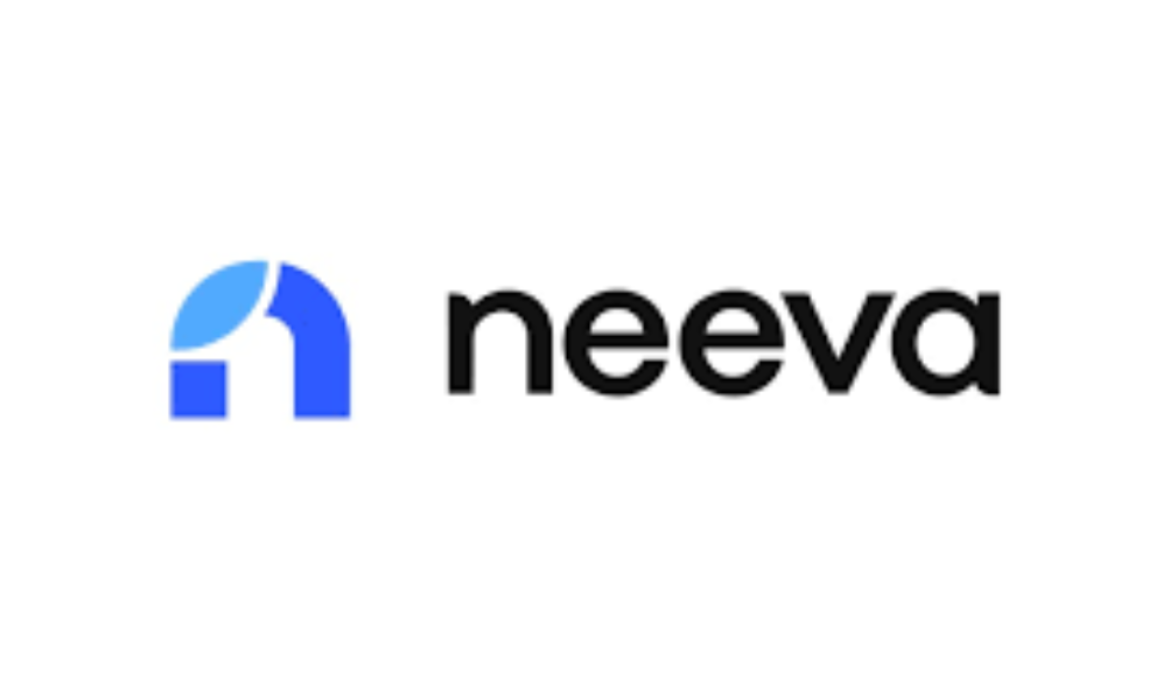Aleph Acquires 86% Of Connect Ads In A Quest For Global Expansion!
Aleph Holding, a worldwide partner to the world’s largest digital media companies, has acquired 86 percent of Connect Ads in a cash and stock swap, the company said today.
Aleph Holding now has a presence in the Middle East and North Africa, as part of its global expansion and penetration into new markets.
Aleph’s complementary portfolio of digital media service firms, includes Httpool, Internet Media Services, and Wise, Blue, Social Snack, and AdDynamo, which gives top digital platforms like Facebook and many others access to new regions and under-served areas.
Through Connect Ads’ more than 14 other exclusive media agreements with global and top digital media companies including Twitter, TikTok, Verizon Media, Spotify, Adobe Advertising Cloud, Huawei Ads, Bigo Ads, and others, Aleph’s services are now available across the MENA region.
Aleph expects to produce $1 billion in revenue by 2021, thanks to an increased network that now includes over 90 regions. The acquisition is a significant step forward in this quest.
Gastón Taratuta, Founder & CEO of Aleph Holding said that building throughout MENA has significant value, both in terms of serving current partners and clients and in terms of expanding on existing ties in other regions of the world.
He further added –
We have been following Connect Ads’ growth and geographical expansion over the last five years and I am excited to welcome them to the Aleph family. We will work together with Connect Ads and A15 to make this a successful partnership
Karim Beshara, General Partner of A15 also commented –
A15 is happy with the phenomenal results, value, and growth that Connect Ads created over the years; it validates A15’s venture-building strategy in creating outliers
He also said that his team is enthralled to continue its partnership with Aleph and Connect Ads and contribute to a worldwide digital dynamo. Furthermore, he also expressed his excitement regarding the future growth prospects and possible profits that this transaction will provide.
Mohamed El Mehairy, CEO of Connect Ads went on record to say that it is an eventful time because of the commonality in the vision and goals that they share here. He added –
We see this as a giant leap in the right direction for Connect Ads and all our stakeholders, including our teams, partners, and clients. Being a part of Aleph, this truly global structure will give us more leverage in managing our business as well as global exposure and potential that goes far beyond MENA and EMEA
In A Pioneering Move, Starcom Launches Media Booking Bot
Starcom, which is owned by Publicis, has announced the design and delivery of an industry-first automated media booking bot.
This first edition of the media booking bot can book and modify digital and print advertising campaigns on a regular basis thanks to clever automation called – Robotic Process Automation (RPA).
ABACUS (Automated Bot for Amendments to Campaigns and Uploads), which was developed in-house, employs a bespoke technological platform to analyze and verify critical campaign data overnight, ensuring that planned media plans are accurate and efficient.

Campaign
The UK CEO of Starcom, Nadine Young ( above picture) explained how automation is a major component of their new intelligence-driven approach, designed to utilize the best of human capacity and revolutionary technology such as this.
She commented –
ABACUS allows us to liberate our teams from the more repetitive administrative tasks and unleash further opportunity to focus on more strategic and creative growth opportunities for our clients
Young also added –
This is the future, and a brilliant example of automation being used to enhance, rather than dampen, creativity
Authenticating media plan data, publishing to campaign booking platforms, trafficking to ad servers, and sending campaign information to media owners are all part of the media booking bot’s operation.
During testing, it was gathered that the bot increased booking speed and accuracy by up to 50%.
Starcom’s buying teams will be able to focus on higher-value activities, such as generating innovative creative executions with media partners, owing to the bot’s contribution in saving them a great deal of time.
Starcom is the first Publicis Media firm to test this as part of a pilot programme.
Football Stadium Advertising: How Different Channels Show Different Touchdown Ads!
Were you aware that football stadiums actually show different touchline ads for different channels or countries?
Pretty mind-boggling, right?!
So, how do they do it?
They incorporate a technology called virtual replacement perimeter technology. Using this sort of advanced technology, broadcasters can filter regional-specific ads over existing ads in the stadium.
A Twitter user by the name of @UltraLinx observed this recently and explained how it works. He said that the camera is mounted atop a “virtual head” that reads the data for positioning and alignment.
That camera’s lens is aligned with the camera body and sensor, as well as the software, so that the virtual software may be corrected for any offset off “zero” when the camera is installed.
He added-
“Think of a virtual 3D box, and they just tell the computer where to put everything relative to the camera. Data is fed from the camera to a computer running the virtual software. After the calibration, the virtual operator will load in the graphics they have been given, created to whatever specifications. They then use various keys to mask out what they want and don’t want the virtual graphics to appear on.”
http://www.youtube.com/watch?v=EuTVVg0_Si8
The virtual replacement perimeter technology is also used to create virtual billboards, distance lines (for example, in horse racing), stat overlays, on-ground logos that can be seen in cricket matches, and pictures, as well as whole studios.
In fact, this is not the first time this technology is being used. In a 2018 warm-up Football game between England and Costa Rica at Elland Road in Leeds, The Football Association (FA) and ITV tested this new adtech.
The stadium’s peripheral advertisements were limited to the United Kingdom. During the show, however, Virtual Replacement Technology broadcasted newly enhanced and augmented regional advertising to the Americans on one stream and Asia, Australasia, and portions of Europe on another.
Tom Gracey, senior broadcast manager of The FA, said-
“The potential for Virtual Replacement Technology is substantial. Perimeter LED displays have become a fundamental platform for activating brand partnerships in sport.”
Technology has really revolutionized the way we see the world how the content of any form can be tailored to meet the entertainment needs of people across the world.
Trade Desk Allows First-Party Data Onboarding In Solimar Trading Platform
The Trade Desk has announced a new trading platform, Solimar, that will allow clients to integrate first-party data to guide media-buying strategies, eliminating the need for a separate customer-data platform (CDP) or data-management platform (DMP).
By the virtue of this move, the Trade Desk will be able to build the UID2 ecosystem while offering users identity-based targeting as the first-party data will be transformed into Unified ID 2.0 (UID2s) from e-mail addresses.
One of the most significant improvements of the new user interface, Solimar, is the inclusion of client data. To include client feedback in the launch, The Trade Desk performed two months of private beta testing with a limited group of its major clients.
Coming from the Spanish words, ‘ sol y mar’ meaning ‘ sun and sea’, Solimar, for the Trade Desk, symbolizes the “perfect moment” when the sun and the sea meet during sunrise/sunrise.
Trading specialist Dawn Chan said in a briefing call –
This is what our release represents—it’s the perfect moment in our industry as we head into a new age of advertising, one that is digital and data-driven and also moves beyond the complexities of our ecosystems around siloed data and single-channel strategies
He added that the company wants to concentrate on enhancing advertisers’ capacity to do what’s best for their business as well as for consumers.
Mitch Waters, The Trade Desk’s SVP of Southeast Asia, India, and ANZ, told Campaign Asia-Pacific in a briefing call that it has been two years approximately since the development of Solimar first began.
The Trade Desk had three important areas of attention for Solimar, in addition to easy onboarding of first-party data: strengthening the user interface, putting goals at the forefront of campaigns, and including enhanced planning and optimizations.
Koa, an artificial intelligence application that gives suggestions throughout the campaign development and while it is running, is used to optimize campaigns.
According to Waters, this combined with what the business says is a more simplified and intuitive platform design intends to free traders from the tedious work of setting up campaigns and line items, allowing them to focus more on insights. Both agency and in-house teams have been considered when developing the platform.
Solimar launched on 7th July’21, comes three years after Trade Desk released its user interface, Megagon.
Waters said –
Essentially we had to build the plane while flying it we had our old platform to stand up. We have the vision of what we want to achieve…then what we do is work backwards in terms of resourcing and everything else we have to do on an everyday basis. We release product every week, and our team have requests every other week that we need to prioritise
He added –
It was about working together to keep the pace of everyday innovation, as well as building something scalable and meaningful
The Solimar Platform
To help buyers make smarter choices, the Solimar platform starts with a ‘Live flight summary,’ which displays what The Trade Desk considers to be the most significant data for growth, such as:
- Goals: Does the client have a suitable marketing mix?
- Pacing: Is the client on schedule and expected to spend the full amount?
- Channels: Is the channel mix suitable, or is there space for diversification through emerging channels such as DOOH?
- Data: Is the client successfully utilizing data? This section shows how many campaigns are based on first-party, third-party, or no data.
Advertisers may now measure against many KPIs, categorized as primary, secondary, and tertiary, using the new campaign creation tools.
Adbrain’s campaign insights, such as reach and frequency, can be examined at the household, individual, or unique-ID level.
Also, planners can use a forecasting tool to adjust targeting settings and observe how it affects the reach and frequency of a campaign.
Waters, who sees this technology as particularly useful in APAC because of the dispersion of platforms between markets, says –
One area where we have seen a lot of demand is within OTT. If you are buying individually, you don’t have complete view of what an OTT opportunity might look like. Being able to see holistically what an OTT opportunity is across major partners within Indonesia
Koa
Solimar’s performance-enhancing features are powered by the Koa AI engine. When a client develops a new campaign, Koa will recommend KPIs based on the customer’s given objectives, cross-device vendors, a budget split by channels, retargeting, lookalike audiences, and contextual techniques, among other things.
Furthermore, the Koa Identity Alliance is a cross-device graph that integrates leading and new ID solutions such as LiveRamp IdentityLink, Oracle Cross Device, Tapad Device Graph, and Adbrain Device Graph, removing clients’ “guesswork” about identity resolution.
The Trade Desk intended to make Koa’s decisions visible, so clients may see which CPMs, tactics, and data segments the AI chose, and change or disregard Koa’s suggestions as needed.
First-Party Data
One of Solimar’s main advances is incorporating the value of a client’s first-party data or third-party audiences to inform their media purchase.
Clients can identify their target consumers in the campaign setup in the form of first-party or third-party data, which will act as a seed audience for Koa to build when making suggestions.
Brands can submit first-party data such as pixels, app data, and IP addresses directly into the platform or import data from a third-party DMP or CDP via a data section.
If a client decides to import CRM data as email addresses, they will be translated to UID2s automatically. After the UID2s have been converted, the platform will scan them to see how many are ‘active UID2s,’ or how many of these users have been active in the programmatic universe in the previous week.
If the client decides to act on those UID2s, they will be transmitted into the programmatic environment to match the publisher side, resulting in a synchronized UID2 ecosystem.
A Panoramic Perspective Of Amazon’s Advertising Business!
In the last five years, Amazon’s advertising business has boomed. It now has a DSP footprint that matches Google’s, and its SSP is the second most popular. In just the last year, the online retailer made more than $22 billion in ad income. Even for advertisers who spend a lot of money on the tech giant, Amazon’s advertising strategy and business remain inexplicable.
If we just take the case of Amazon’s video advertising, it is notable that the company built Fire TV, its most ambitious video project, and also controls Twitch, which began testing direct programmatic partnerships last year; and also owns IMDb TV, a free streaming platform. The Amazon DSP provides programmatic video advertising across the web, and in-feed video spots appear in Amazon searches to evaluate or explain products.
Video isn’t the only kind of advertising that’s growing in popularity. A rising number of brands use the DSP even though they don’t sell on Amazon or even have an e-commerce presence. They simply want to use Amazon shopping data to target customers throughout the web.
If you pick instances from your life, you will notice that Amazon knows about everything you shop for, the brand you use, your spending bracket, and which products are you most likely to use. Advertisers use this information tactfully to get you to buy their product.
Amazon has grown to become the third-largest digital ad market in the United States, and a rising competitor to challenge Google and Facebook’s digital ad duopoly.
While it is a bit perplexing to untangle Amazon’s colossal advertising business, we have to go in-depth into its fabric to comprehend its adtech behavior. Keep reading below to get a bird’s eye view of Amazon’s advertising business model!
How Big Is Amazon’s Advertising Business?

Tech Crunch
From Amazon DSP to Sponsored Display, there is an eclectic range of advertising solutions that Amazon offers to people. Want to know how far spread is Amazon’s ad business? Check these out:
- Amazon Live – Allowing real-time brand interaction, Amazon Live offers the opportunity of contacting shoppers in real-time and engage in interactive shopping experiences.
- Amazon Attribution (Beta) – This solution provides marketers with an understanding of how their non-Amazon marketing portals impact shopping and sales activities on Amazon through search, social services, video, display and e-mails.
- Amazon DSP – Amazon’s demand-side platform (DSP) allows users to reach customers throughout the web, including on Amazon sites and applications, as well as through publishing partners and third-party exchanges.
- Sponsored Display – Amazon advertising platform offers this solution to help you target the perfect audience for your business both on and off Amazon with display ads that you can develop in no time.
- Sizmek Ad Suite – From creation to distribution, this ad server on Amazon will help you disseminate your campaign across a variety of screens.
- Sponsored Brands – With personalized ads that display in Amazon shopping results, you can increase brand recognition and product discovery for your brand and product portfolio.

Voicebot.ai
- Post (Beta) – Posts in beta tell your brand’s narrative to relevant Amazon shoppers as they browse your categories. Shoppers may explore your brand’s feed by clicking through Posts and discovering product pages directly from your feed
- Custom Advertising Solutions – If you want to increase your brand awareness and conversation, Amazon’s Custom Advertising team will collaborate to create campaigns that engage customers at all phases of the marketing funnel.
- Audio Ads – Extend your brand’s reach beyond the screen with audio adverts. These ads are seen during commercial breaks while listening to Amazon Music’s free tier on Alexa-enabled devices, such as Echo and Fire TV, as well as on mobile and desktop.
- Stores – With a self-service store, you can create and design a unique brand destination on Amazon for no extra charge.
- OTT ( Over-The-Top) And Online Video Ads – This solution helps you reach a wider audience and engage them on Amazon-affiliated sites like IMDb.com and Twitch, as well as devices like the Fire TV and the web.
- Sponsored Products – With advertising that appears in shopping results and on product pages, you can help people discover and buy the things you sell on Amazon. There is no requirement for prior advertising experience.
Amazon Ad Business Growth

Inc.
During the pandemic, ad spending saw a significant cut by marketers and we saw the rise of e-commerce advertising. As more and more people shopped from home, Amazon embraced this e-commerce advertising like no other company.
According to EMarketer, Amazon controlled 10.3 per cent of the US digital ad market in 2020, up from 7.8 per cent in 2019, putting it in direct competition with Google and Facebook for ad dollars. Walmart, Instacart, Walgreens, and other businesses have also joined Amazon.
Amazon made $21.5 billion in advertising revenue in 2020, up from $9.3 billion the previous year. While advertising accounts for a small portion of Amazon’s revenue from retail sales and Amazon Web Services, the company’s cloud division, it is one of the company’s fastest-growing segments. Advertisers’ search spending, which is primarily directed to Google, are continuing to be slashed by the internet giant.
All of Amazon’s advertising strategy is well thought out and will contribute to a booming ad business growth in 2021 as well.
What Is Amazon Advertising Business

MarketWatch
Advertisers and sellers frequently cite a lack of data and tools as obstacles to advertising on Amazon, which has spawned a cottage industry of companies dedicated to assisting marketing on the platform. Meanwhile, Amazon’s OTT division, which sells adverts in select Amazon Fire TV apps, has pushed further into programmatic advertising.
The four key areas where Amazon’s advertising business model skyrockets include video, non-endemic advertisers, conquesting, and polished targeting and measurement. Let’s have a look at these areas:
Video
Amazon’s advertising business is not just about Prime Video, but also Fire TV, where Amazon sells around a third of the inventory. Fire TV has a footprint of around 50 million US households and is the only platform where TV-style video commercials may be directly linked to sales.
The only way one can get their hands on the Fire TV inventory is the Amazon DSP. Advertisers can still get on Fire TV without having to go via Amazon because programmers keep 70% of the inventory to sell themselves. However, only the Amazon DSP can use logged-in Amazon data to boost those purchases or attribute ads to online sales.
Although adding video to static sponsored product listings can be costly, Amazon finds it easier to sell because those units are offered per click, exactly like sponsored search.
In comparison to the programmatic video, where companies pay per impression and views are counted at the second mark, the pay-per-click approach can appear to be a good deal.
Because Amazon is selective with its sponsored videos, only showing in-depth product videos on highly relevant searches and for reputable brands, sponsored video listings are becoming a key signal of brand reputation.
Conquesting
Conquesting is actually a really intelligent way for the Amazon advertising platform to accommodate sponsored ads. When you do a product search on Amazon, there are sponsored products that show up. Here, advertisers bid on certain terms, and advertisements with greater bids have a better chance of being seen.
What happens on Amazon is that, because of this bidding, when you search for a product by a specific company, the products of a rival brand pops up first. This is what advertisers call, conquesting, or the buying of terms against search terms for rival products.
Advertisers can also purchase “sponsored brands” listings, which display in search results to assist consumers in finding a specific brand.
Furthermore, because Amazon’s purchasing data is so thorough, marketers may save money by not advertising to consumers who have just purchased a product and will not be purchasing it again very soon.
Non-Endemic Business
Beyond its base of e-commerce marketers, Amazon is also looking for expansion. The Amazon DSP created a dedicated ad sales team for non-endemic brands. What this means is that hotels or resorts can use Amazon to target audiences on search terms such as “ travel stationery” or “ mini travel kits”.
Targeting And Measurement
With a cloud-based data clean room in beta, Amazon is fine-tuning its targeting and measurement. Amazon’s cleanroom expands the possibilities for leveraging Amazon’s buying data.
The Amazon DSP, for example, has a 14-day attribution window. Advertisers can test longer attribution windows using Amazon’s marketing cloud.
Amazon has a plethora of data about how consumers shop and has made additional information available to advertising to help them buy and target adverts. Advertisers, on the other hand, claim that Amazon’s data is restricted and that they are constantly looking for new ways to measure ads.
Amazon Ad Business Revenue

Comicdoc.net
According to Loop Capital, Amazon’s advertising unit currently contributes 2.4 times as much revenue as Snap, Roku, Twitter and Pinterest combined, and it is growing at 1.7 times the rate.
According to Amazon, in the first quarter of 2021, its unit which is mostly made up of advertising but also includes sales connected to other service offerings, increased revenue by 77 per cent year over year to more than $6.9 billion.
According to Loop, Amazon made $22.4 billion in ad income in the last 12 months, growing 65 per cent year over year. That was 2.4 times the combined income of middle-cap ad platforms Snap, Twitter, Roku, and Pinterest, which increased by 38% over the same time period to $9.3 billion.
Amazon Business Marketing Strategy

Keyword Tool
When it comes to Amazon advertising strategy for 2021, it is evident that the company has well thought of all the challenges and advantages of the same. Here are 4 such strategies:
Optimized SEO
When buyers search for relevant search terms, optimizing your products for Amazon SEO will help them find them. Well-described product searches are prioritized by Amazon’s search engine and pinned to the top of the recommended searches.
PPC Advertising
Your business will receive more visitors to your product listings if you use Amazon advertisements. You can ensure that these ads create sales by delivering them to the most appropriate shoppers, thanks to Amazon’s extensive targeting choices.
If you decide to use PPC (Pay-Per-Click) in your Amazon marketing strategy, you’ll be able to choose from a variety of ad types such as Sponsored Brands, Sponsored Products, and Sponsored Display.
Third-Party Advertising
Even if you sell on Amazon, your advertising doesn’t have to be limited to the platform. Increased clickthrough and conversion rates can be aided by third-party advertising. Make sure you use data to optimize your advertising at all times. This is greatly aided by automated data reporting.
Affiliate Marketing
Amazon has an affiliate programme that allows website owners to promote Amazon products on their own sites. A commission is earned when users click on these links and purchase a product. This is an effective Amazon marketing tactic because it brings in new customers to your Amazon website. Putting your products on other websites can bring in a whole new set of customers that you wouldn’t have gotten otherwise.
Advertising: Amazon Vs Google Vs Facebook

True Interactive
When it comes to paid search advertising, Google Ads has been the standard for years. However, as its advertising powers develop, Amazon and Facebook are swiftly becoming a formidable force within their own right.
If you’re a digital marketer, marketing manager, or business owner, you’ll almost certainly be using Google for advertising or all of these platforms at some time in your career. But each time, there will be an inextinguishable dilemma as to which one suits your needs the best. So, we have curated something that will help you decide – keep reading!
Google Ads
Retailers who sell a wide variety of products prefer Google Ads. The greater the number of products you have, the wider the net you can throw in Google. That’s a roundabout way of suggesting that you may bid low on a variety of keywords and yet get a lot of traffic.
Amazon Ads
Unlike the other shops, Amazon has made its platform available to third-party resellers, which means you won’t have to wait for a Target (or Amazon) customer to locate you. All you have to do is upload your products to Amazon and you’re set to go.
Facebook Ads
The Facebook Ads algorithm is fantastic at displaying the correct ads to the right individuals. This makes Facebook Ads ideal for startups with a specific product. It’s almost as if the fewer products you have, the better.
Another significant benefit of Facebook Ads is the level of inventiveness available. 15–30 second videos, media-rich photos, comments, text, and more are all included.
Is Google Advertising Worth It?

TechSling Weblog
Google advertisements, which are paid for by businesses, can be an exceptionally successful means of sending relevant, qualified visitors to your website at precisely the right time when people are searching for the items or services your company provides.
If you are using Google for advertising, then you can use various types of ads such as Search Ads, Shopping Ads, Display Ads, And Video Ads (YouTube).
There are a plethora of Google advertising benefits for small businesses such as the ability to reach motivated and targeted audiences, as well as a pay-for-performance pricing mechanism and an easy-to-follow ROI.
If your budget is an issue, you can dodge contending larger organizations by utilizing more longtail and local keywords, which will lower the cost of bidding on keywords that everyone wants. These keywords may not be as popular as the others, but they will still help you drive more high-converting traffic to your website.
While talking about the Google advertising business model, it is also important to talk about the cost.
Google Advertising costs vary depending on a variety of criteria, including the competitiveness of your keywords and industry, your geographic region, the quality of your advertising campaigns, and more. The average cost per click for Google search advertisements in the United States is $2.32 across all industries. The average cost of Google Ads in other countries is frequently substantially lower.
Facebook Advertising: Policies And Strategies

AMH Web Studio
Facebook advertising is available in a variety of formats. You can advertise your Page, its content, user behaviors, or your website as a whole. Despite Facebook’s increased focus on native ads and keeping customers on the platform, you may still drive traffic to your website.
Facebook advertisements used to be more like display ads than search ads, but newer versions, such as product ads, allow advertisers to sell things directly to users.
One of the major Facebook advertising benefits is that you can directly target users by using these components – location, age, gender, interests, connections, relationship status, languages, education, and workplace.
Facebook also allows for detailed interest targeting. Users can be targeted using Detailed Interest Targeting based on information in their profile, such as “listed likes and interests, Pages they like, apps they use, and other profile (timeline) content they’ve provided” (according to Facebook). With Detailed Interest Targeting, you’ll get the best return on your investment.
Is Facebook Advertising Better Than Google?

AgencyAnalytics
To answer this age-old question, we have to assess the strengths of both Google and Facebook advertising. Let’s get started.
Advantages Of Google Ads
- A wider audience – One of the biggest benefits of using Google as a platform for advertising is its massive reach. Google processes around 40,000 search requests each second, for a total of over 1.2 trillion web searches per year. It’s simple to see why AdWords is the most popular and frequently utilized PPC platform in the world, thanks to Google’s more accurate search results.
- A vast range of ad formats – Advertisers can employ ad extensions, site links, social proofing like user reviews, location targeting, Shopping advertisements, and a variety of other capabilities, giving them an unrivalled level of personalization and control. Google has even created ad formats that are suited to the specific demands of different types of businesses.
Advantages Of Facebook Ads
- A powerful visual medium – The greatest Facebook advertisements mix in perfectly with the videos, photographs, and other visual content in users’ News Feeds, allowing advertisers to take advantage of not only the visual ads’ strong persuasive capabilities but also the aspirational language that makes high-quality ads so appealing.
- Unmatched ROI – One aspect of Facebook Ads that frequently surprises newcomers is the potential return on investment that advertising on the network provides, as well as how far skilled advertisers can stretch a small ad spend.
So, to answer the question of which is better – Facebook or Google – the answer is both. Both the platforms serve differently to different businesses.
Furthermore, many businesses are combining the benefits of Google Ads and Facebook Ads to gain maximum visibility, improve leads and sales, and attract new consumers, using diverse techniques that align with the functionality of each platform and generating impressive returns on their advertising expenditure.
Conclusion
Having seen a panoramic perspective on Amazon’s advertising business along with Google Ads and Facebook Ads, it is safe to say that Amazon is right in leading the other two in this area. Here’s how –
- Amazon is distinct from Google and Facebook in that it is primarily focused on a bottom-of-funnel audience, whereas Facebook and Google are more directed toward the top
- Amazon advertising has a higher CPC, conversion rate, and average rate of return than Google or Facebook advertising. Amazon is your greatest option if you want to maximize your Return on Ad Spend (ROAS)
With Amazon’s growing popularity, it is likely that it will shine as the best advertising business platform soon.
Revolutionizing Advertising: Australia Invests In Programmatic DOOH
The entire world is undergoing complete digitalization and advertising companies in Australia are no far behind. In Australia, advertising agencies are progressively resorting to programmatic DOOH, with over a quarter of agencies trading DOOH inventory programmatically for the first time in 2020.
This move has a significant hand in revolutionizing the ad tech sector, as it enables programmatic platforms to run ads on outdoor advertising billboards. In an attempt to replace traditional outdoor advertising, such ads will feature videos and images that will be more engaging and easy to track.
As per the IAB Australia’s Attitudes to Programmatic DOOH Report, well over 10% of agencies raised their programmatic spending in an otherwise dismal OOH market.
According to this report, for agencies interested in programmatic DOOH, flexible purchasing options, operational efficiency, and better data targeting possibilities are key.
They also rated the opportunity for self-reported cross-channel planning as pertinent.
The report also says that agencies are still figuring out how programmatic DOOH fits into their internal planning and buying, with only 37% using the same team to place and buy OOH and programmatic DOOH
Nearly half of programmatic DOOH decision marketers planning and buying totally independent of other media, says the report.
Furthermore, the report also adds that agencies and advertisers are requesting education to better grasp the programmatic DOOH offering and mechanisms so that measurement and tracking may be improved.
Gai Le Roy, the Chief Executive of IAB Australia, said that this critical new industry study provides very clear feedback from media buyers and advertisers on areas where they would like more education and support from the industry to aid with their programmatic DOOH investment, measurement, and assessment.
He further added –
I have every confidence that the programmatic DOOH market will boom through 2021 and 2022, embracing the benefits of programmatic while also retaining the long-standing agency approach to developing fit for purpose OOH creative for different environments and placements.
According to the report, in 2022 and beyond, the industry will see more innovative exploration as marketers begin to broaden their creative suite beyond conventional executions, with a number of agencies planning to use alternative formats for the first time (HTML 40 per cent, video 37 per cent, and dynamic creative 36 per cent).
Smart Acquires DynAdmic , A Cookie-Free CTV Advertising Platform
Smart AdServer, an independent ad monetization platform, has acquired DynAdmic, an integrated video advertising marketplace, to expand its CTV and media services offerings.
DynAdmic’s technology and operations will be incorporated into Smart’s offering to provide buyers with unique media solutions and media publishers with a new exclusive monetization channel.
To better connect ad campaign performance goals with user privacy needs, the combined group will benefit from innovative cookie-free contextual targeting possibilities.
DynAdmic, which was founded in Paris in 2012, has expanded worldwide to seven locations including the United States, France, Germany, Mexico, Brazil, Colombia, and Dubai, with the United States accounting for 60% of its income.
With 120 employees, DynAdmic grew by 32% in 2020 and is expected to rise by 90% in H1 2021.
Advertisers can use its proprietary audio and video content identification technology to achieve a cookie-free contextual targeting solution. DynAdmic runs specialised video advertising campaigns, with OTT and Connected TV accounting for 40% of those campaigns.
Smart CEO, Arnaud Creput said that their strategic development in the United States will be accelerated as a result of this acquisition and that they are committed to building a scalable, independent option to the dominant platforms that prioritize privacy, transparency, innovation, and performance. He further added –
“We are impressed by the technology and expertise developed by DynAdmic to bring superior performance to brands and agencies with OTT and CTV contextual targeting. The addition of DynAdmic complements Smart’s cookie-free and CTV strengths, which are the most critical shifts in our industry.”
Smart’s absorption of DynAdmic is a logical next step in the company’s global expansion, given its acquisition of LiquidM in December 2019 and the launch of its “direct buy” platform Smart Buyer Connect.
DynAdmic completely connects with Smart’s existing holdings and ongoing strategies to invest in technologies and media services that assist media buyers and bring them closer to quality publishers while delivering managed media solutions. And on the other hand, Smart’s publisher clients can gain an advantage of DynAdmic’s new monetization channel that will boost demand.
Stéphane Bonjean , DynAdmic’s CEO and Bruno Champion, the CTO said –
“Smart’s full-stack capabilities will allow us to rapidly integrate with their platform which, along with their strong technology, expertise and global presence, will generate significant value for our clients and partners.”
They also added that they are ecstatic to be joining a pioneer and industry leader and that they consider Smart as the appropriate partner to help them accomplish their growth goals.
“We share the same values of independence, excellence, and innovation.”
CTV Advertising To Reach $21B In 2021 In The United States!
According to a report released last week by BMO Capital Markets’ Wall Street equities research team, connected TV (CTV) ad spending in the United States is expected to reach almost $21 billion this year and will rise at a rate of around 23% annually through 2030, reaching about $100 billion.
BMO Analyst Daniel Salmon wrote in the report –
“The growth of CTV advertising is the answer to the No. 1 topic we’ve been asked over the course our career. When will the inevitable growth of internet advertising disrupt TV ad budgets? Defined as use of a television to stream video over-the-internet, CTV sits at the crossroads of advertising transformation, bridging the signature traditional channel (television) and the fastest-growing digital format (video).”
The analysis, which comes just days after GroupM released an update on the U.S. advertising market, anticipates a new category called “CTV+” to reach $9 billion this year, considerably beyond many previous projections and forecasts.
BMO believes that CTV advertising’s “advanced targeting capabilities” are considerably superior to traditional TV advertising, which is one of the reasons for its optimism.
Salmon added that CTV can be targeted directly to the individual household or user, unlike linear inventory that is typically targeted at broad demographics and/or metropolitan areas. He also said –
“This concept isn’t entirely new in television as addressable television predates CTV, but has only just begun to scale itself.”
TikTok : A Digital Ecosystem For Content Creators To Earn Extra Income!
TikTok’s capacity to make songs go viral has music marketers and record companies enthralled. They frequently pay influencers to incorporate a tune in their videos in the hopes of it becoming popular. On an app that is still in the early stages of adding monetization tools, the practice provides an essential source of income for TikTokers.
Jesse Callahan, the founder of the upstart marketing firm Montford Agency, said –
“Music marketing on TikTok is huge. It’s a big way that labels have brought artists into the spotlight the last couple of years. It’s also a big way that creators have made a lot of money.”
According to Callahan, influencers he works with charge between $200 and $300 per million followers so that a creator having 5 million followers could potentially earn between $1,000 and $1,500 for song promotion.
He added that this depends on the level of engagement as there are many content creators on TikTok who have half a million followers but still manage to engage more audience than those with over 5 million followers.
Sarah Callahan, who uses the username “Sarati” to broadcast videos to her 10 million TikTok fans, told Insider that a song promotion costs between $1,750 and $2,500. She claims she receives a handful of promotion pitches per day from independent artists and record labels, with prices starting at $500 per post.
Nicole, Natalie, and Nika Taylor, TikTok triplets who sing in the Taylor Red music act, joined TikTok in March 2020 after live concerts were halted due to the coronavirus outbreak. Their TikTok account went viral, gaining 8.6 million followers in just over a year.
To begin making money, the band turned to song promotion, creating an account on the freelancer portal Fiverr to interact with musicians and marketers. On Fiverr, the group charges $750 for a single video, $1,400 for two videos, and $2,000 for three music videos.
Natalie says –
“We’ve done all kinds of song promotions for all kinds of artists. We’re a country band, but we’ve done promotions for rap, hip hop, pop, pretty much every genre out there.”
According to Devain Doolaramani, the founder of the talent management and marketing organization, The Fuel Injector, there are still prospects for creators with fewer than a million followers to earn hundreds of dollars.
He said that a creator with 200,000 to 300,000 followers who receives 20,000 to 30,000 likes on a video can make $200 for a song promotion.
Rates for micro-influencers with 50,000 to 150,000 followers are more varied but can range from $20 to $150, according to Austin Georgas, a senior account manager at the Gen-Z media business Flighthouse who specializes in music marketing. He added that he believes pricing to be a “grey area” for people working for the first time.
Griffin Haddrill of the marketing agency VRTCL, said –
“When you’re looking at the top 10, top 20, top 30 creators on the app, I
would say be prepared to spend anywhere from $8,000 to $50,000 for a post.”
Neeva : An Ad-Free Search Engine Launched By Former Google Ads Head
After a long tenure as Google’s head of search and advertising products, Sridhar Ramaswamy left the business three years ago. His experience of managing the world’s largest ad-supported firm was one of the most powerful in advertising, and it prepared him for virtually any leadership post in data-driven marketing.
This is why, it was quite the shocker when Ramaswamy co-founded Neeva, a search engine with the purpose of never including advertising. After one year of testing with a 10,000-person user base, Neeva has now been launched to the public.
Ramaswamy went to record to say –
“ We started Neeva because we love search, the technical problem. But we thought the long-term consequences of a primarily ad-supported model for the search engine was more and more about the advertiser, rather than the user or the customer.”
In a conversation with AdExchanger, Ramaswamy went on to speak at length about his motivation and ambitions regarding this project.
On being asked why he decided to launch a new search engine, the former Google head said that he considers this market to be incredible and dominated by one single player.
The reasoning behind a new search engine, Ramaswamy says, is to have a fundamentally distinct business model as a strong base of a new product that would allow Neeva to compete more successfully than other search engines that try to replicate Google’s offerings.
When the obvious question of – why is Neeva different – was thrown in the air, Ramaswamy said-
“We describe it as a private and personalized search experience. And it is a subscription search engine.”
He added that as of now, they have 10,000 users. And about the pricing, Sridhar Ramaswamy said that they are still deciding on how much to charge for the subscription, but it will hit the ballpark of $5 per month across the US. Furthermore, he said that his team is still in the process of creating a search stack.
AdExchanger then asked – “Why the commitment to an ad-free search engine?”
Ramaswamy replied that Neeva’s logic is based upon the fact that any ad-supported business model is built on collecting large amounts of data; and over time, the user experience takes a back seat to advertising. This makes it hard to distinguish an ad from organic content.
Moreover, he says that at Neeva, nobody will have to wonder about affiliate links. The aspiration behind this search engine is to create trust and make it user-oriented.
Ramaswamy also said during this conversation, that if publishers provide Neeva with content, then a portion of the revenue will be shared with them.
When asked if there were ways for marketers to reach users apart from advertising, Ramaswamy said that they have worked with SEO players and site owners to keep their content relevant.
They have also created a product known as Spaces, which can be conceived as a user’s thoughts and images related to a specific topic.
He adds further that the aim of Neeva is to bring together customers with content creators on the internet, without taxing anyone for it.

